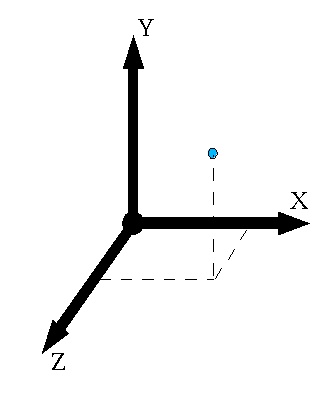
3D graphics adds a Z coordinate

OpenGL coordinate system is right-handed - +X to the right, +Y up, +Z out of screen
Other software or application domains may use other coordinate systems
The 3D viewing volume is controlled by glOrtho.
This is an axis-aligned box containing the region to be drawn.
glOrtho(left, right, bottom, top, near, far)
Note that near and far can be confusing - they are the negatives of the Z values for the corresponding planes.
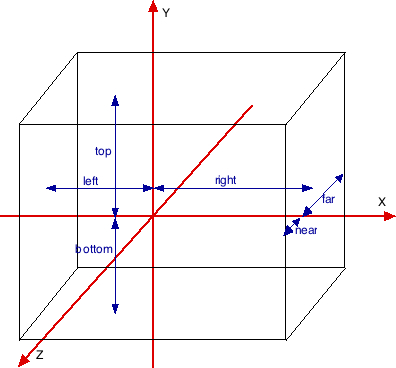
glOrtho(-5, 8, -4, 4, -1, 3)
All OpenGL transformation functions are 3D; we can now use the Z coordinate
glTranslatef(x, y, z)
Moves objects by (x, y, z) units.
glRotatef(angle, x, y, z)
Rotates objects around the axis (x, y, z), by angle degrees.
Note that "the axis (x, y, z)" means a line that from the origin (0, 0, 0) through the point (x, y, z)
glScalef(x, y, z)
Resizes objects by the factor x in the X direction, y in the Y direction, and z in the Z direction.
| GLUT shapes |  | ||
| GLU quadrics | 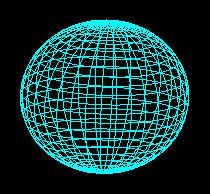
| GLUT text |  |
Glut provides functions to draw several basic shapes - Platonic solids, simple curves, and teapots.
They can be drawn either with solid polygons, or in wireframe.
glutSolidSphere(1.5, 16, 8)
glutWireDodecahedron()
Example code: glutGeometry.py
| Sphere | glutSolidSphere(radius, slices, stacks) | 
|
| Cone | glutSolidCone(baseRadius, height, slices, stacks) | 
|
| Torus | glutSolidTorus(innerRadius, outerRadis, sides, rings) | 
|
| Tetrahedron | glutSolidTetrahedron() | 
|
| Cube | glutSolidCube(size) | 
|
| Octahedron | glutSolidOctahedron() | 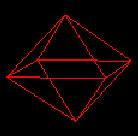
|
| Dodecahedron | glutSolidDodecahedron() | 
|
| Icosahedron | glutSolidIcosahedron() | 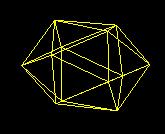
|
| Teapot | glutSolidTeapot(size) | 
|
Quadrics are various smooth surfaces described by functions like:
x2 + y2 + z2 = r2
The basic GLU quadrics are spheres, cylinders, cones, and disks.
To draw one, create a "quadric object" and pass it to the appropriate GLU function. There are functions to control how a quadric is drawn - with points, lines, or polygons; with or without lighting; with or without texturing.
quadric = gluNewQuadric() gluQuadricDrawStyle(quadric, GLU_LINE) gluSphere(quadric, 2.5, 32, 24)
Example code: gluQuadrics.py
| Sphere | gluSphere(quadric, radius, slices, stacks) | 
|
| Cylinder | gluCylinder(quadric, baseRadius, topRadius, height, slices, stacks) | 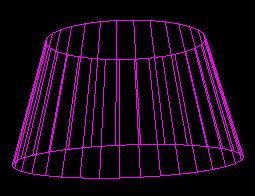
|
| (a cone is a cylinder with one radius = 0) | ||
| Disk | gluDisk(quadric, innerRadius, outerRadius, slices, rings) | 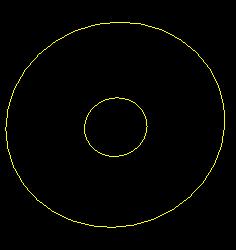
|
| Partial Disk | gluPartialDisk(quadric, innerRadius, outerRadius, slices, rings, startAngle , sweepAngle) | 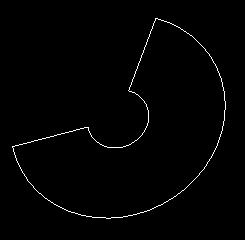
|
As with images, there are many file formats for storing 3D models.
Object formats can contain:

An OBJ file is a plain text file, containing vertices, polygon faces, and other information. Each vertex, face, etc, is given on a separate line.
Each line begins with a token to identify what sort of line it is - 'v' for vertex, 'f' for face, etc.
